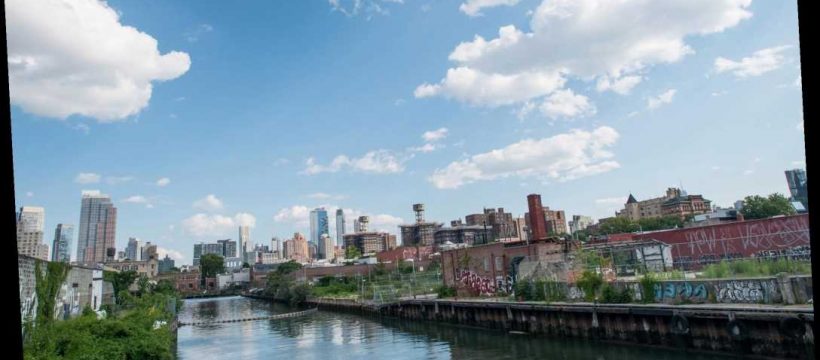Brooklyn’s toxic Gowanus Canal is finally getting its long-awaited makeover.
The US Environmental Protection Agency on Tuesday issued a formal order, officially kicking off the first phase of a larger $506 million cleanup for one of the nation’s most polluted waterways — 10 years after declaring it a Superfund site marked for high-priority.
“This order will ensure the remediation of a portion of the heavily contaminated waterway, which is the centerpiece of a revitalized neighborhood,” said EPA Regional Administrator Pete Lopez.
The order covers dredging and other remediation work along the First Street turning basin and other nearby sections of the 1.8-mile canal — once dubbed “Lavender Lake” for its purplish chemical hue. EPA officials said the cleanup’s $125 million first phase will begin in September and take 30 months to complete.
The feds are handling the work and picking up much of the tab, but power company National Grid is expected to foot $100 million of the bill on the entire cleanup because it’s the successor company to several manufactured-gas plants that polluted the waterway in the first place.
“We’ve come a long way to achieve this milestone in cleaning the Gowanus Canal,” said Rep. Nydia Velázquez, a Democrat who represents the neighborhood. “With pilot dredging tested, full-scale dredging, capping and restoration of the canal can proceed — starting with the first third of the canal.”
In 2018, federal contractors conducting a dredging test run in the canal’s tiny Fourth Street turning basin accidentally undermined the structural integrity of a public promenade outside the nearby Whole Foods, causing the once-flat walkway’s bricks to buckle.
Since the Industrial Revolution, textile manufacturers, gas refineries and coal shippers all dumped their toxic waste directly into the canal, leaving behind a festering cocktail of poison slime composed of polycyclic aromatic hydrocarbons, polychlorinated biphenyls and heavy metals — including mercury, lead and copper — to fester at the creek bottom.
In 2007, scientists have discovered that the long-contaminated canal is not just toxic, it’s also infected with gonorrhea.
Source: Read Full Article
